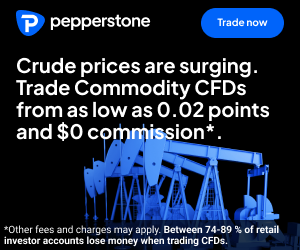HOW TO OPTIMIZE A FOREX TRADING STRATEGY
A trading strategy is only as strong as the process behind it. Optimisation in Forex means refining rules, parameters, and setups so that a method adapts to changing markets without losing its edge. Done correctly, it sharpens consistency and improves long-term results. Done poorly, it creates overfitted systems that collapse in real conditions. This article explains how to optimise a Forex strategy step by step, highlights the traps of overfitting, and shows how to stress-test a system to ensure it survives beyond the backtest.

Strategy Optimization
At its core, strategy optimisation in Forex trading is about making a trading system more efficient without undermining its robustness. For beginners, the idea can sound like simply “tweaking until it works,” but that approach is misleading and dangerous. True optimisation requires a structured process: identifying the essential parts of a strategy, testing adjustments with discipline, and ensuring that the results are statistically meaningful rather than accidental. The goal is not to create a strategy that performs brilliantly on past data, but one that remains reliable in the uncertain conditions of the live market.
Understanding What Optimisation Really Means
In trading, optimisation refers to the systematic process of adjusting variables within a strategy to improve performance metrics such as profitability, drawdown, and consistency. For example, a simple moving average crossover strategy might involve two moving averages: one short-term and one long-term. Optimisation would test different lengths for these moving averages to find the combination that offers the best balance of returns and risk. Importantly, optimisation does not mean changing the underlying logic of the strategy; it is about refining parameters, not reinventing the system.
Key Parameters That Can Be Optimised
The most common variables subject to optimisation include:
- Indicator settings: Values such as moving average lengths, RSI periods, or Bollinger Band deviations.
- Entry rules: Specific thresholds for signals, such as RSI crossing below 30 or above 70.
- Exit rules: Conditions for closing trades, like stop-loss levels, take-profit multiples, or trailing stop distances.
- Position sizing: How much to risk per trade, often expressed as a percentage of account equity.
- Time filters: Restricting trades to certain sessions (e.g., London or New York) or avoiding low-liquidity periods.
Each of these factors has a direct impact on performance. Optimisation explores which combinations produce the most stable and repeatable results.
The Process of Structured Optimisation
Optimisation should follow a disciplined sequence rather than random adjustments. A structured approach might look like this:
- Define the baseline: Record the performance of the strategy with its original settings. This creates a reference point against which to measure improvements.
- Adjust one variable at a time: Change a single parameter while keeping all others constant. This isolates the effect of each variable.
- Use wide parameter ranges: Instead of testing small increments, explore broad ranges to see how sensitive the system is to changes.
- Look for stable zones: A reliable strategy should perform well across a range of parameter values, not just at one exact setting.
- Document results: Keep a record of every test, including both performance metrics and observed weaknesses.
By following this process, traders avoid the trap of endless tinkering and focus instead on systematic refinement.
Performance Metrics to Track
Optimisation requires clear benchmarks for success. The most useful performance metrics include:
- Profit factor: The ratio of gross profit to gross loss. A value above 1.5 is generally considered promising.
- Drawdown: The maximum decline from a peak to a trough. Lower drawdowns indicate better risk control.
- Win rate: The percentage of trades that are profitable. However, this must be balanced against risk-to-reward ratios.
- Sharpe ratio: A measure of risk-adjusted returns, useful for comparing strategies with different levels of volatility.
- Consistency across time: Results should remain stable across different timeframes and market conditions.
Beginners often focus only on profit, but sustainable strategies are judged on a combination of profitability, stability, and controlled risk.
Tools for Optimisation
Modern trading platforms such as MetaTrader, NinjaTrader, and TradingView include built-in optimisation tools. These allow traders to run automated backtests across different parameter sets quickly. More advanced users may employ dedicated software or even custom coding in Python or R to conduct large-scale optimisations with statistical validation. Regardless of the tool, what matters is not the speed of testing but the discipline with which results are interpreted. A fast computer can generate thousands of variations, but without careful analysis, the results may only reflect randomness rather than genuine improvement.
The Importance of Sample Size
One of the most overlooked aspects of optimisation is the need for adequate sample sizes. A strategy that looks excellent on ten trades but collapses on one hundred is not truly optimised—it is merely lucky. Beginners should ensure that any optimised strategy is tested on hundreds, ideally thousands, of trades across diverse market conditions. This provides enough data to separate random performance spikes from genuine robustness.
Balancing Complexity and Simplicity
A key principle in strategy optimisation is keeping systems as simple as possible while still effective. Overly complex strategies may perform brilliantly in backtests but usually fail in live trading because markets change in unpredictable ways. A simple system with a few well-optimised rules is far easier to maintain and adapt. The guiding question should be: “Can I explain this strategy in a few sentences?” If the answer is no, the system may already be over-optimised or too fragile.
Common Mistakes Beginners Make
Some of the most frequent errors include:
- Testing too many parameters at once, leading to confusion and misleading results.
- Focusing only on profit while ignoring drawdowns and risk.
- Using too little data, such as backtesting only on one pair or a short timeframe.
- Chasing perfection—endlessly adjusting until the backtest looks flawless, but the system collapses in real time.
Recognising and avoiding these mistakes is as important as the optimisation process itself.
Why Optimisation is Never Finished
Markets evolve, and no strategy remains optimal forever. What works in trending conditions may underperform in ranging environments, and vice versa. For this reason, optimisation should be seen as an ongoing process rather than a one-time event. Traders should revisit their strategies regularly, updating parameters as needed while keeping the core logic intact. The most successful traders are those who treat optimisation as routine maintenance rather than a frantic search for perfection.
Ultimately, strategy optimisation is about refinement, not reinvention. When done properly, it provides clarity, consistency, and confidence. For beginners, mastering this process early creates the foundation for systems that can adapt and endure in the fast-moving world of Forex trading.
Avoid Overfitting
If optimisation is about improving a trading strategy, overfitting is about killing it. Overfitting occurs when a system is so finely tuned to past data that it loses the ability to perform in real markets. For beginners, it is one of the most dangerous traps: a backtest that looks flawless, only for the live account to quickly unravel. The key is understanding how overfitting happens, recognising its warning signs, and applying safeguards that keep a strategy realistic rather than theoretical.
What Overfitting Looks Like
Overfitting can be compared to memorising exam answers rather than learning the subject. A strategy that is overfitted is designed to “pass the test” of past price movements, but when conditions change, it fails. Signs of overfitting include overly specific parameter values (such as a moving average of exactly 47 days instead of a rounded 50), perfect backtest equity curves with no drawdowns, and performance that looks too good to be true. These outcomes often reflect curve-fitting—the practice of forcing a system to match past data so tightly that randomness is mistaken for predictive power.
How Overfitting Happens
There are several common ways traders fall into overfitting:
- Excessive parameter tweaking: Changing variables repeatedly until the backtest looks perfect, even if the changes have no logical basis.
- Too many indicators: Adding layers of signals to eliminate every losing trade in history, creating a system that cannot adapt to future markets.
- Short backtest periods: Optimising only on a narrow slice of data, such as one year, which ignores the diversity of market conditions over time.
- Ignoring transaction costs: Building a strategy that works only before spreads and slippage are included, making it unprofitable in reality.
Each of these mistakes leads to a system that looks like a money machine in hindsight but is fragile in live execution.
The Role of Randomness
Markets are full of noise. Random price movements can produce patterns that seem significant but are purely coincidental. Overfitted systems confuse noise with signal. For instance, a strategy might discover that EUR/USD tends to rally on the third Thursday of the month at 2 p.m. Such a pattern might appear in past data, but it has no economic logic behind it and is unlikely to persist. Robust strategies, in contrast, are built on principles that make sense across time and instruments, such as trend-following, mean reversion, or breakout behaviour.
Preventing Overfitting with Robust Testing
The best defence against overfitting is rigorous testing. Traders should split their data into two sets: one for optimisation and one for validation. This is known as in-sample and out-of-sample testing. A strategy is optimised on the first dataset and then tested on the second, unseen dataset. If the system performs well on both, it is more likely to be robust. If it only performs on the in-sample data, overfitting has occurred.
Another safeguard is walk-forward testing, where a strategy is optimised on a short period, then tested on the following period, repeating the process in rolling windows. This mirrors how a strategy will face evolving markets and provides a better sense of adaptability.
Keep Strategies Simple
Complexity is the ally of overfitting. The more rules and parameters a system has, the easier it becomes to tailor it to past data. Simpler strategies are not only easier to test and maintain but are less prone to overfitting. A moving average crossover system, for example, has far fewer opportunities to overfit than a multi-indicator system with dozens of variables. Beginners should resist the urge to over-engineer and remember that robustness often comes from simplicity.
Focus on Logic, Not Perfection
A strategy should make sense in economic or behavioural terms. For example, a breakout strategy works because traders tend to pile into trades once price exceeds certain levels, creating momentum. If the logic is sound, the strategy is more likely to survive changing conditions. Overfitted strategies, by contrast, often have no logical explanation for why they work. If you cannot explain the reasoning behind a rule in plain language, it may be a red flag.
Recognising the Psychology of Overfitting
Overfitting is not only a technical mistake but also a psychological one. Traders naturally want to eliminate losing trades from their backtests, chasing a perfect equity curve. This desire often leads them into the trap of excessive tweaking. Accepting that losses are part of trading is essential. A system that occasionally loses but remains profitable overall is far healthier than one that appears flawless in history but collapses in real life. In other words, the pursuit of perfection is the fastest route to failure.
Practical Rules to Avoid Overfitting
To keep strategies robust, traders can adopt simple guidelines:
- Limit the number of parameters—fewer moving parts reduce overfitting risk.
- Always validate on out-of-sample data before committing capital.
- Reject strategies that only work on one pair or timeframe.
- Prefer rules with clear economic or behavioural logic.
- Be suspicious of perfect backtests—they rarely survive in live trading.
By following these principles, beginners avoid the illusion of a flawless system and build strategies that are resilient enough to handle real-world uncertainty.
The Value of Imperfection
The irony of overfitting is that the healthiest strategies are often imperfect. They may show periods of drawdown or inconsistent results, but these flaws make them more realistic. Markets are chaotic, and no strategy can escape this truth. Embracing imperfection means accepting that losing streaks will happen, but as long as the logic is sound and risk is controlled, the system can endure. In practice, traders who embrace imperfection often outperform those who chase perfect curves, simply because their systems survive long enough to prove their worth.
Stress Testing
Once a strategy has been optimised and checked for overfitting, the final step before risking capital is stress testing. In Forex trading, stress testing means subjecting a system to extreme conditions and unexpected scenarios to evaluate whether it can survive outside the ideal environment. The reality is that markets rarely behave in smooth or predictable ways. Sudden news shocks, flash crashes, liquidity gaps, and central bank interventions all have the potential to disrupt trading systems. A strategy that looks perfect in calm conditions but collapses under pressure is not viable for the long run. Stress testing ensures that a trader’s edge is durable, not fragile.
Why Stress Testing Matters
A strategy’s backtest is only as good as the conditions it covers. If historical data did not include periods of high volatility or major news events, the backtest may paint a misleading picture of stability. Stress testing deliberately pushes a system into tougher scenarios to see whether it breaks. This is similar to how banks conduct stress tests on their balance sheets: by modelling crises rather than assuming normal conditions. For traders, it means asking the uncomfortable question—what happens to my system when the market behaves abnormally?
Methods of Stress Testing in Forex
There are several ways to stress test a trading strategy, each addressing different vulnerabilities:
- Parameter robustness testing: Change key parameters slightly (for example, adjusting a moving average from 50 to 48 or 52) and see if the system still performs. A robust strategy should tolerate small changes without collapsing.
- Different market conditions: Test the system across diverse market phases—trending, ranging, high volatility, and low volatility periods. A strategy that only works in one condition is unlikely to survive.
- Spread and slippage simulation: Widen the assumed spreads or introduce slippage in the backtest. This replicates real-world execution costs that can erode profits, especially during fast-moving markets.
- News event impact: Simulate scenarios where unexpected announcements cause sudden spikes. Does the system handle the volatility, or does it generate catastrophic losses?
- Monte Carlo simulations: Randomise the sequence of trades to see how luck impacts results. If profitability depends too heavily on one lucky streak, the system may be unstable.
Walk-Forward Analysis
One of the most powerful forms of stress testing is walk-forward analysis. Instead of optimising a system on all available data, traders optimise on a small window (say, two years), then test the strategy on the following six months. The process repeats in rolling periods, creating a more realistic view of how the system adapts to new conditions. If performance holds up across multiple walk-forward cycles, the strategy is more likely to survive in live trading. If not, it suggests that the system is too dependent on the specific conditions of the backtest period.
Worst-Case Scenario Planning
Stress testing is not just about numbers—it is also about preparing psychologically. Traders should ask themselves: “What if I lose 10 trades in a row? What if spreads double during a central bank announcement? What if liquidity disappears?” By imagining these worst-case scenarios, traders can set risk limits and safeguards in advance. This might include reducing position sizes, avoiding trading during high-impact news events, or placing guaranteed stop-losses with brokers who offer them. The goal is not to eliminate risk, but to make it survivable.
Resilience over Perfection
A common misconception is that stress testing should produce perfect results. In reality, the purpose is to reveal weaknesses. A robust system is not one that never fails, but one that fails gracefully. For example, a strategy may suffer drawdowns during high volatility but recover steadily afterward. That recovery ability is more valuable than a flawless equity curve that disintegrates when conditions shift. Resilient systems may look less attractive on paper, but they are far more reliable in practice.
Combining Stress Testing with Real Trading
Even after extensive stress testing, the final exam for any strategy is live trading. Starting with small real-money positions allows traders to confirm whether the system behaves as expected under true market conditions. Paper or demo tests cannot fully replicate slippage, order execution delays, or the emotional pressure of risking real money. By gradually increasing exposure after successful live trials, traders ensure that the strategy not only survives simulations but also proves itself in the real world.
The Continuous Nature of Stress Testing
Stress testing is not a one-time exercise. Market conditions evolve constantly: geopolitical shocks, central bank policies, and even technological changes in trading platforms can reshape dynamics. Strategies that work in 2025 may struggle in 2027 unless they are retested and adapted. The best traders treat stress testing as ongoing maintenance, revisiting their systems quarterly or annually to confirm that they remain robust. This habit ensures long-term survival in a marketplace defined by change.
Final Word on Stress Testing
Stress testing is the final filter that separates fragile strategies from durable ones. By deliberately exposing systems to harsher conditions than they are likely to encounter, traders gain confidence that their methods can withstand real-world shocks. For beginners, stress testing may seem tedious compared to the excitement of live trading, but it is one of the wisest investments of time. A strategy that survives stress testing is not guaranteed to succeed, but it is far more likely to endure the unpredictable storms of the Forex market.







